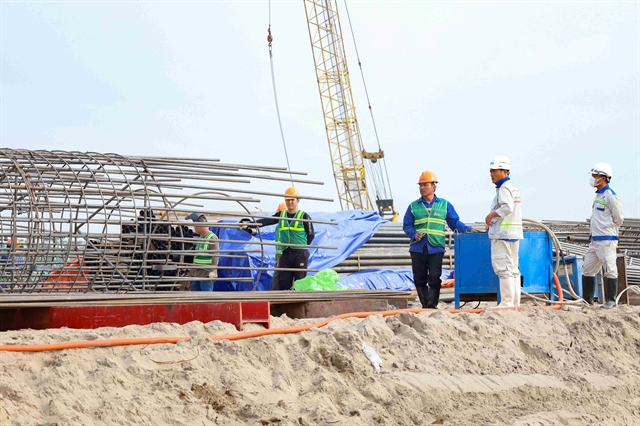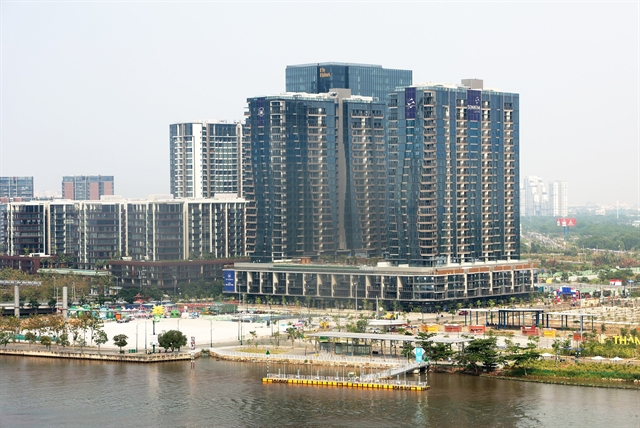 Economy
Economy

 |
| An urban area in HCM City. — VNA/VNS Photo |
HÀ NỘI — The Vietnamese real estate market is signalling the end of a prolonged downturn, with notable signs of recovery in profitability. However the pace of revival remains measured, due to sluggish sales and limited improvements in consumer incomes.
Recent developments in Đồng Nai Province represent the Government’s effort to unlock the sector’s potential. The approval of adjustments to the 1/10,000-scale master plan has paved the way for the phased planning of Aqua City, a flagship project from Novaland (NVL).
The legal breakthrough is not just a win for Novaland, but also for Nam Long Investment Corporation (NLG) and Development Investment Construction SJC (DIG), which stand to benefit.
The move reflects broader governmental support to address challenges facing real estate developers. The stock market responded positively to these developments.
NVL shares, buoyed by the regulatory progress, have defied broader market trends, catalysing gains in other real estate stocks. The market viewed this as a vote of confidence in the sector's ongoing support rather than an isolated success for major developers.
According to FiinTrade, the housing real estate sector experienced revenue growth in the last quarter, supported by a rebound in credit flows for home buyers.
Cumulative housing credit growth reached 4.6 per cent in the first nine months of 2024, a significant leap from 1.2 per cent in the first half of the year.
Meanwhile, Kafi Securities reported that listed real estate companies ended a four-quarter streak of negative growth, with Q3 profits up nearly 19 per cent year-on-year.
Even excluding Novaland’s impact, revenue growth remained robust, with a 24.3 per cent quarter-on-quarter increase.
Real estate supply and demand in the primary market has seen a resurgence, according to CBRE data.
Nam Long is a typical example of this recovery. Its Phase 2 launch of Nam Long II Central Lake generated VNĐ600 billion (US$23.6 million) in sales within hours, complementing the handover of Akari Phase 2 in HCM City. These achievements are expected to bring Nam Long closer to its year-end profit targets, reversing earlier losses.
For Đất Xanh Group (DXG), optimism surrounds the forthcoming DXH Riverside project, which promises to deliver over 3,000 apartments. However, unresolved disputes with earlier buyers pose risks to the completion timeline.
Similarly, Phát Đạt Real Estate Development JSC (PDR) has ambitious plans for six projects beginning in 2025, projecting VNĐ40,000-50,000 billion in revenue over three years, but its profitability will only be realised by 2026-2027.
The financial trio of Hoàng Huy Investment Financial Services JSC (TCH), Hoàng Huy Investment Services JSC (HHS) and CRV Real Estate Group (CRV) is also worth noting.
Notably, CRV’s upcoming listing on the Hồ Chí Minh Stock Exchange (HoSE) could unlock hidden value for investors, reflecting the broader market’s anticipation of growth across key segments.
Challenges clouding recovery
Despite these bright spots, the industry faces persistent challenges. Inventory levels remain elevated due to slower sales as consumer demand lags behind. Even as lending interest rates drop to record lows with some banks offering sub-7 per cent loans, economic headwinds have tempered buyers' confidence.
A looming shadow is the significant volume of corporate bonds nearing maturity. For 2024 alone, real estate bonds worth over VNĐ23.25 trillion will mature, constituting 42.7 per cent of the total due.
Over the next year, nearly 45 per cent of maturing corporate bonds are in the residential real estate realm, with VNĐ42 trillion deemed at risk of delayed repayments.
Further compounding the issue is the economic fallout from prior periods of slower growth, which has weakened household incomes. Global financial volatility has also made investors cautious, negatively impacting both property buyers and the broader market sentiment.
For investors, experts sent a clear message that opportunities exist, but selective investments based on fundamentals are crucial. — VNS

.jpg)

.jpg)
